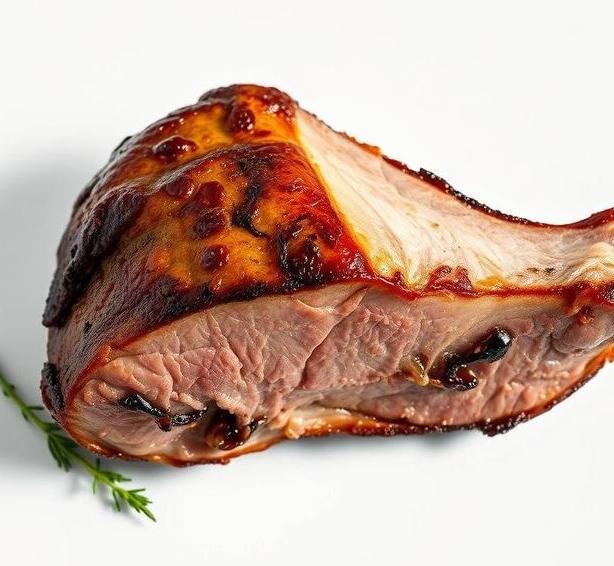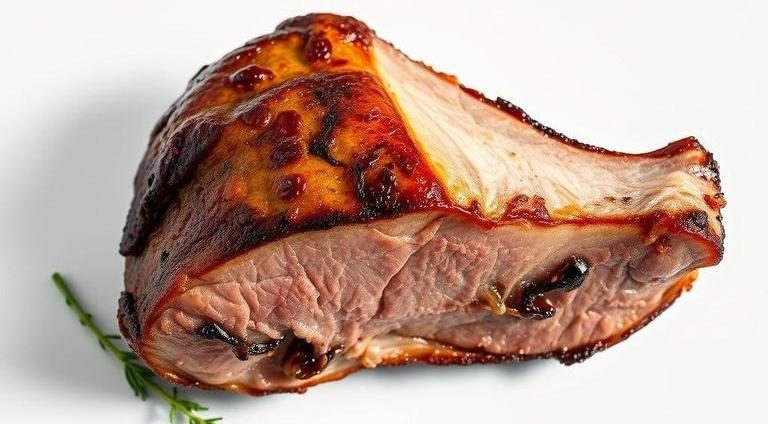Lamb is a tender, flavorful meat that can be a real showstopper at any meal, whether you’re slow-roasting a leg for a special dinner or grilling chops for a quick weeknight feast. However, as delicious as it is, like all meats, lamb has a shelf life and can spoil if not handled or stored properly. Understanding how to tell when lamb has gone bad, how long you can keep it, and how to store it effectively will ensure that you enjoy its rich taste at its best without any health risks.
In this guide, we’ll dive deep into the shelf life of lamb, what signs to look out for when it’s spoiled, and the best ways to store it so that you can enjoy the full flavor and tenderness that lamb has to offer. Let’s get started!
Can Lamb Go Bad?
Yes, lamb can definitely go bad, just like any other type of meat. If not stored, cooked, or handled properly, it can spoil, develop harmful bacteria, or lose its flavor and texture. Spoiled lamb not only becomes unpleasant to eat but also poses a risk of foodborne illness, such as salmonella, E. coli, or listeria, which can cause serious health issues.
It’s important to remember that lamb, like other meats, has specific temperature requirements and handling guidelines that need to be followed to ensure it stays safe for consumption.
Shelf Life For Lamb

Lamb’s shelf life depends on a variety of factors, such as how it’s stored (whether fresh or frozen), its preparation (cooked or raw), and the condition it was in when purchased. Let’s break it down:
-
Fresh Lamb (Raw) In The Fridge
- Storage Time: 3 to 5 days
- Temperature: Should be kept at or below 40°F (4°C)
- Storage Method: Store it in the coldest part of the refrigerator and ideally, use a plastic bag or a sealed container to prevent cross-contamination.
-
Frozen Lamb (Raw)
- Storage Time: 6 to 12 months for best quality
- Temperature: Keep it at or below 0°F (-18°C)
- Storage Method: Wrap it tightly in plastic wrap, aluminum foil, or a freezer-safe bag to prevent freezer burn.
-
Cooked Lamb In The Fridge
- Storage Time: 3 to 4 days
- Temperature: 40°F (4°C) or lower
- Storage Method: Store in airtight containers to prevent contamination and preserve freshness.
-
Cooked Lamb In The Freezer
- Storage Time: 2 to 6 months
- Temperature: 0°F (-18°C) or lower
- Storage Method: Ensure airtight packaging to keep the flavor intact and avoid freezer burn.
Common Signs Of Spoilage
Even if you’ve stored lamb properly, it’s essential to know how to identify when it has gone bad. The last thing you want is to bite into spoiled meat or risk a foodborne illness.
Here are the common signs that lamb may be spoiled:
- Unpleasant Odor: Fresh lamb should have a clean, slightly gamey smell. If it develops a strong, sour, or off-putting odor, it’s a clear sign that it’s no longer safe to eat. A rancid odor is an indication of bacterial growth and spoilage.
- Discoloration: Fresh lamb is usually a bright pink to deep red color. If it starts to turn brown or gray, it may not necessarily be spoiled, but it’s a sign that it’s losing freshness. If the color is accompanied by other spoilage signs, it’s best to toss it.
- Slimy or Sticky Texture: Lamb should feel firm and slightly moist to the touch. If it’s slimy or sticky, that’s a good indication that bacteria have begun to grow on the surface, and it should be discarded.
- Mold Growth: If you notice green, white, or blue fuzzy spots on the surface, this is mold growth, and the meat should not be eaten.
- Change in Texture: As lamb spoils, it can lose its natural tenderness. If the meat feels unusually tough or stringy when you try to cut it, it might be spoiled.
- Excessive Liquid in Packaging: A lot of liquid pooling inside the packaging might indicate that the lamb is on its way to spoiling. Though some moisture is normal, excessive liquid can be a red flag, especially if combined with other signs.
How To Store Lamb?

Proper storage is crucial to preserving the freshness and flavor of lamb and preventing spoilage. Here are some expert tips on how to store lamb at home:
Refrigeration For Fresh Lamb
- Always store fresh lamb in the coldest part of the fridge, which is usually at the back.
- If the lamb comes in a plastic tray with packaging, you can leave it in its original packaging, or you can re-wrap it in plastic wrap or wax paper for extra freshness.
- Ensure that the fridge is set at 40°F (4°C) or lower to slow down the growth of bacteria.
Freezing Lamb For Long-Term Storage
- Freezing lamb is the best way to extend its shelf life, but proper wrapping is key.
- To avoid freezer burn, tightly wrap lamb in plastic wrap, followed by aluminum foil, or use a vacuum sealer. You can also store lamb in freezer bags that are designed to protect the meat.
- Label the lamb with the date it was frozen so you can keep track of how long it’s been in storage.
Avoid Refreezing Raw Lamb
- If you’ve thawed lamb, don’t refreeze it unless it’s been cooked. Refreezing raw meat can cause a loss of quality and increase the risk of bacterial contamination.
Storing Cooked Lamb
- After cooking lamb, let it cool at room temperature for no more than two hours before storing it in the fridge.
- For best results, store cooked lamb in an airtight container or resealable bag to prevent the meat from drying out and absorbing odors from other foods in the fridge.
Use The Right Container
- When storing lamb in either the fridge or freezer, airtight containers are your best friend. They prevent exposure to air, which can lead to bacterial growth and drying out.
Expert Tips
Here are some expert tips for handling lamb to keep it fresh for as long as possible:
- Always Buy Fresh: When buying lamb, check the expiration or ’use by’ date on the packaging. Purchase it from reputable sources where it has been properly stored and handled.
- Keep It Separate: Store raw lamb separately from ready-to-eat foods in the fridge to avoid cross-contamination. You might even want to keep it in its own drawer or on the lowest shelf to prevent juices from dripping onto other foods.
- Defrost Properly: If you’re thawing frozen lamb, the safest way is to place it in the fridge and allow it to defrost slowly. If you’re in a rush, you can defrost it in the microwave or under cold running water, but make sure to cook it immediately after.
- Marinate Lamb Before Freezing: If you plan to marinate lamb, consider doing it before freezing. Freezing marinated lamb will allow the flavors to penetrate the meat better when you cook it later.
FAQs
How Long Does Lamb Last In The Fridge?
Fresh lamb can last 3-5 days in the refrigerator if stored properly in an airtight container or tightly wrapped in plastic. Cooked lamb can last 3-4 days in the fridge.
How Can You Tell If Lamb Has Gone Bad?
Signs that lamb has gone bad include a sour smell, discoloration (such as turning brown or gray), a slimy or sticky texture, and an off-putting or rancid taste. If in doubt, discard the meat.
Can You Eat Lamb If It’s Slightly Discolored?
Lamb may change color as it ages, but slight discoloration is usually normal. However, if the lamb is brown or gray throughout, it’s a sign of spoilage, and it should not be consumed.
Can Lamb Be Frozen To Extend Its Shelf Life?
Yes, lamb can be frozen to extend its shelf life. Fresh lamb can last up to 6-9 months in the freezer when stored in airtight packaging. Cooked lamb can last 2-3 months in the freezer.
How Should Lamb Be Stored To Prevent Spoilage?
Lamb should be stored in an airtight container or tightly wrapped in plastic or aluminum foil to prevent exposure to air and bacteria. It should be kept at a temperature of 40°F (4°C) or lower in the fridge.
What Happens If You Eat Spoiled Lamb?
Eating spoiled lamb can cause food poisoning, leading to symptoms such as nausea, vomiting, stomach cramps, diarrhea, and fever. If you suspect you’ve eaten spoiled lamb, seek medical attention if symptoms are severe.
How Can I Extend The Freshness Of Lamb?
To extend the freshness of lamb, store it in the coldest part of the refrigerator, wrap it tightly to avoid air exposure, and use it within a few days. Freezing it is the best method for longer preservation.
Is It Safe To Cook Lamb That Smells A Little Off?
No, it’s not safe to cook lamb that smells off. An unpleasant smell is a clear indicator of spoilage. Cooking does not kill all bacteria or toxins that may have developed, so it is best to discard the meat.
How Long Can Lamb Leftovers Be Safely Stored?
Cooked lamb leftovers should be stored in the fridge and consumed within 3-4 days. If you need to keep it longer, freeze it, where it can last 2-3 months.
Can Lamb Go Bad After It’s Cooked?
Yes, cooked lamb can go bad, typically after 3-4 days in the refrigerator. Signs of spoilage include a sour smell, off texture, and discoloration. Always reheat leftovers to an internal temperature of 165°F (74°C) to ensure food safety.